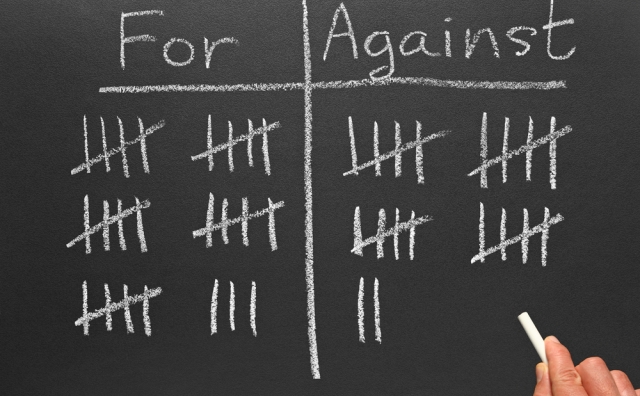 For most people who follow the immigration debate, it is an issue which at its core is about values like fairness, faith, and family. Those who support immigrants’ rights and want to see our immigration system reformed follow the ins and outs of the debate via nightly news, daily media clips, or blogs like this one.
For most people who follow the immigration debate, it is an issue which at its core is about values like fairness, faith, and family. Those who support immigrants’ rights and want to see our immigration system reformed follow the ins and outs of the debate via nightly news, daily media clips, or blogs like this one.
However, another interesting way to follow the debate is through the lens of vote counting. Ultimately, in order for any bill to pass you need to have the votes. Do you have enough to pass a particular chamber and, if not, how will you get them? The advocates deeply involved do just this, and this summer they are serving up huge doses of political pressure on House members who are back home in their districts, in order to ensure a “yes” vote on immigration reform in the fall.
So far, this political pressure seems to be working. ABC News is reporting that:
“In the past few days, two Republican members of the House of Representatives—Daniel Webster in Florida, Aaron Schock in Illinois—have expressed preliminary support for a way to legalize undocumented immigrants and allow them to eventually earn full citizenship. Even the House GOP whip, Kevin McCarthy (Calif.), announced support for legal status, although he stopped just short of supporting full citizenship.”
Representative Webster is reportedly one of dozens of “swing” House Republicans that local immigrants’ rights groups are targeting in August. Schock on the other hand was not a target since he won by such a huge margin of victory in his last race and is in a solidly red district, so his support could be seen as either an anomaly or an amazing sign of good things to come.
However, vote counting is not easy when it comes to the House of Representatives. One hundred Senators are easier to keep track of than 435 members of the House. Add in the complex formal and informal rules followed by the House, including something known as the “Hastert rule” (where House leadership will not allow a vote on a bill unless a majority of the majority party supports it). And since the Hastert rule is “informal,” it’s hard to even be sure how it will be honored.
Earlier this summer, Speaker of the House John Boehner assured his caucus that he wouldn’t bring immigration votes to the floor without majority support. Nonetheless, Paul Ryan (D-WI) recently told his constituents to expect a series of immigration votes in October. Does that mean that Boehner thinks he has the majority he needs? Or does it mean, as some have speculated that a majority of Republicans want votes on immigration even if they won’t support the bills? This distinction could matter, as it probably wouldn’t take that many Republican votes to support a legalization program. For instance, if all 200 Democrats vote “yes” on an immigration bill that includes legalization, then theoretically you only need 18 Republicans (plus a few more as a buffer) to pass something that looks like the Senate bill. Thus, keeping track of who supports legalization is key.
One way to follow along is to watch the predictions on Tom Wong’s blog at the Center for Comparative Immigration Studies at U.C. San Diego. The L.A. Times calls Wong the Nate Silver of the immigration reform debate. (Nate Silver is the statistician famous for his national elections predictions via his blog). Wong tries to predict future voting behavior by analyzing members changing demographics in their district, past voting patterns, etc. He also looks at it from a macro-political view, not just from the individual lawmaker’s point of view: does the Republican Party need this vote?
In looking at whether the GOP needs immigration reform in order to keep control of the House in 2014, he provides this analysis:
“To start, there are 33 Republican representatives who are expected to oppose an S.744-type of immigration reform bill, but who are electorally vulnerable headed into 2014. Taking a closer look at these 33 representatives, 18 are in competitive/swing districts. A Republican loss/Democratic gain of these 18 seats, all else equal (I know, all is rarely equal) means a Democratically-controlled House in 2014.
In comparing the districts of these 18 representatives with the districts of Republicans who are not electorally vulnerable and are in safe red districts, clear demographic differences emerge that magnify the salience and importance of supporting immigration reform.”
So if those 18 Republicans who are the most potentially vulnerable in the next election can be persuaded to vote “yes” on immigration reform for their own political well-being, and if all 200 Democrats are ready to vote “yes,” than you have the votes you need in the House, right? Again, that will depend on how the Hastert rule is applied in the House, and that prediction is anyone’s guess.
FILED UNDER: Hastert Rule Immigration, immigration legislation, Republicans


